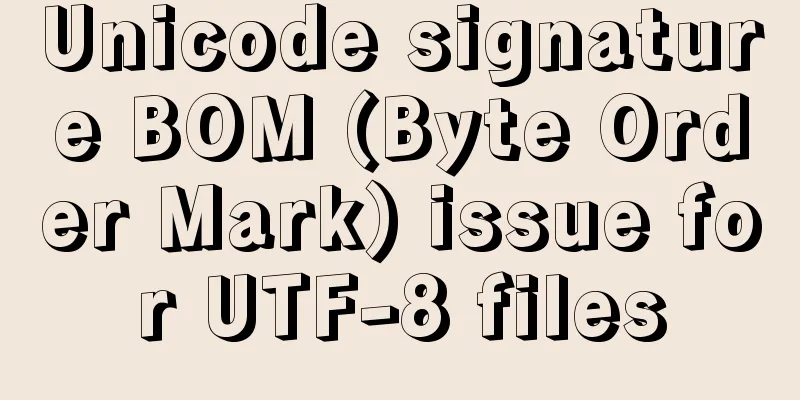Detailed explanation of the properties and instance usage of hasOwnProperty in js

|
1. js will not protect hasOwnProperty from being illegally occupied. If an object happens to have this property, you need to use an external hasOwnProperty function to get the correct result. 2. When checking whether a property on an object exists, hasOwnProperty is the only method available. Examples
var foo = {
hasOwnProperty: function() {
return false;
},
bar: 'Here be dragons'
};
foo.hasOwnProperty('bar'); // always returns false
// Use hasOwnProperty of other object and set its context to foo
({}).hasOwnProperty.call(foo, 'bar'); // trueKnowledge point expansion: Determine whether the attribute exists
var o = new Object();
o.prop = 'exists';
function changeO() {
o.newprop = o.prop;
delete o.prop;
}
o.hasOwnProperty('prop'); // true
changeO();
o.hasOwnProperty('prop'); // false
Determine own attributes and inherited attributes
function foo() {
this.name = 'foo'
this.sayHi = function () {
console.log('Say Hi')
}
}
foo.prototype.sayGoodBy = function () {
console.log('Say Good By')
}
let myPro = new foo()
console.log(myPro.name) // foo
console.log(myPro.hasOwnProperty('name')) // true
console.log(myPro.hasOwnProperty('toString')) // false
console.log(myPro.hasOwnProperty('hasOwnProperty')) // fail
console.log(myPro.hasOwnProperty('sayHi')) // true
console.log(myPro.hasOwnProperty('sayGoodBy')) // false
console.log('sayGoodBy' in myPro) // true
Iterate over all the properties of an objectWhen looking at open source projects, you often see source code similar to the following. The for...in loop enumerates all properties of the object and then uses the hasOwnProperty() method to ignore inherited properties.
var buz = {
fog: 'stack'
};
for (var name in buz) {
if (buz.hasOwnProperty(name)) {
alert("this is fog (" + name + ") for sure. Value: " + buz[name]);
}
else {
alert(name); // toString or something else
}
} Note hasOwnProperty as the property nameJavaScript does not protect the hasOwnProperty property name, so if there may be an object containing this property name, it is necessary to use an extended hasOwnProperty method to get the correct result:
var foo = {
hasOwnProperty: function() {
return false;
},
bar: 'Here be dragons'
};
foo.hasOwnProperty('bar'); // always returns false
// If you are concerned about this, you can directly use the real hasOwnProperty method on the prototype chain // Use another object's `hasOwnProperty` and call
({}).hasOwnProperty.call(foo, 'bar'); // true
// You can also use the hasOwnProperty property on the Object prototype Object.prototype.hasOwnProperty.call(foo, 'bar'); // true
This is the end of this article about the properties and example usage of hasOwnProperty in js. For more content about the property usage of hasOwnProperty in js, please search for previous articles on 123WORDPRESS.COM or continue to browse the related articles below. I hope you will support 123WORDPRESS.COM in the future! You may also be interested in:
|
<<: Docker custom bridge docker0 and docker's opening, closing, and restarting command operations
>>: Detailed explanation of box-sizing in CSS3 (content-box and border-box)
Recommend
Solutions to MySQL OOM (memory overflow)
OOM stands for "Out Of Memory", which m...
Solution to the problem of the entire page not being centered when using margin:0 auto in HTML
I wrote a jsp page today. I tried to adjust <di...
Sharing of two website page translation plug-ins
TranslateThis URL: http://translateth.is Google T...
Detailed explanation of the abbreviation of state in react
Preface What is state We all say that React is a ...
MySQL multi-instance configuration solution
1.1 What is MySQL multi-instance? Simply put, MyS...
MySQL database master-slave replication and read-write separation
Table of contents 1. Master-slave replication Mas...
Several principles for website product design reference
The following analysis is about product design pr...
Introduction to user management under Linux system
Table of contents 1. The significance of users an...
Use Docker to create a distributed lnmp image
Table of contents 1. Docker distributed lnmp imag...
Detailed explanation of the principle and usage of MySQL views
This article uses examples to illustrate the prin...
Summary of common MySQL commands
Set change mysqlroot password Enter the MySQL dat...
MySQL sorting by conventional sorting, custom sorting, and sorting by Chinese pinyin letters
MySQL regular sorting, custom sorting, and sortin...
How to find the my.ini configuration file in MySQL 5.6 under Windows
Make a note so you can come back and check it lat...
Python virtual environment installation and uninstallation methods and problems encountered
Ubuntu16.04 install and uninstall pip Experimenta...
Analysis of MySQL user management operation examples
This article describes the MySQL user management ...









